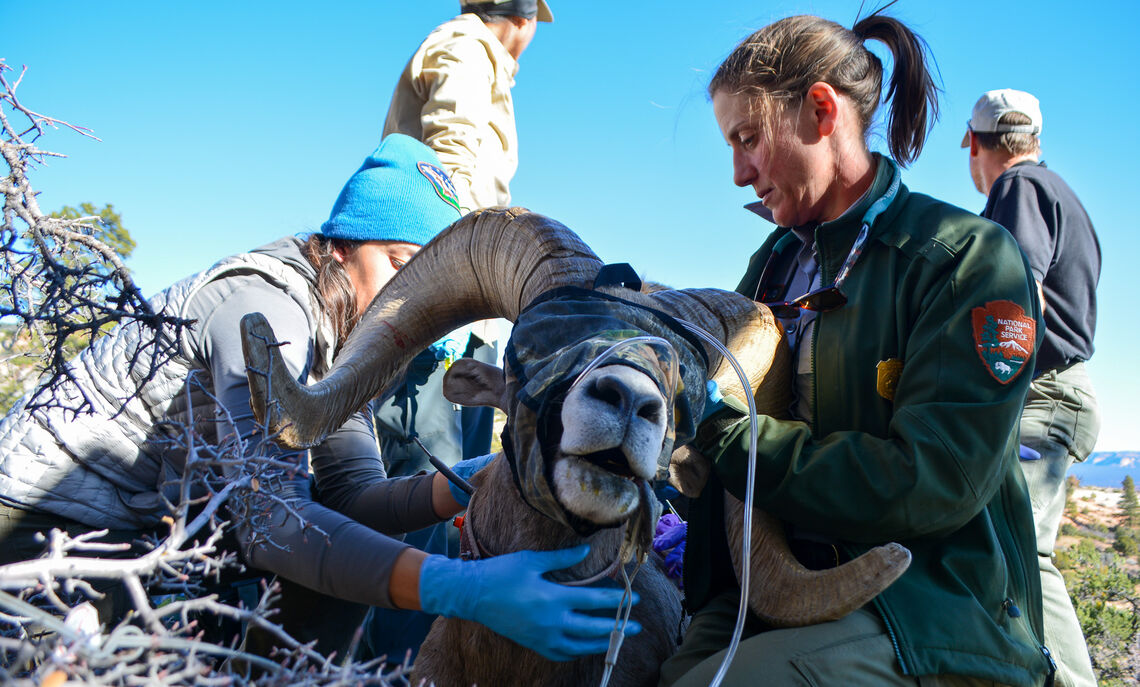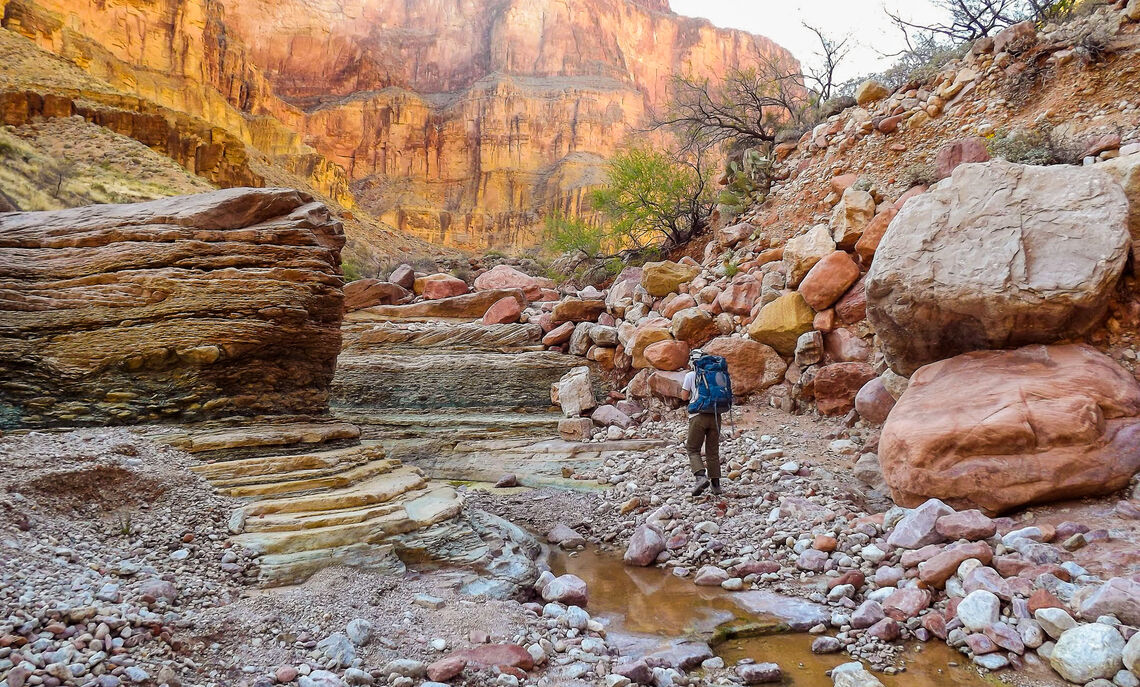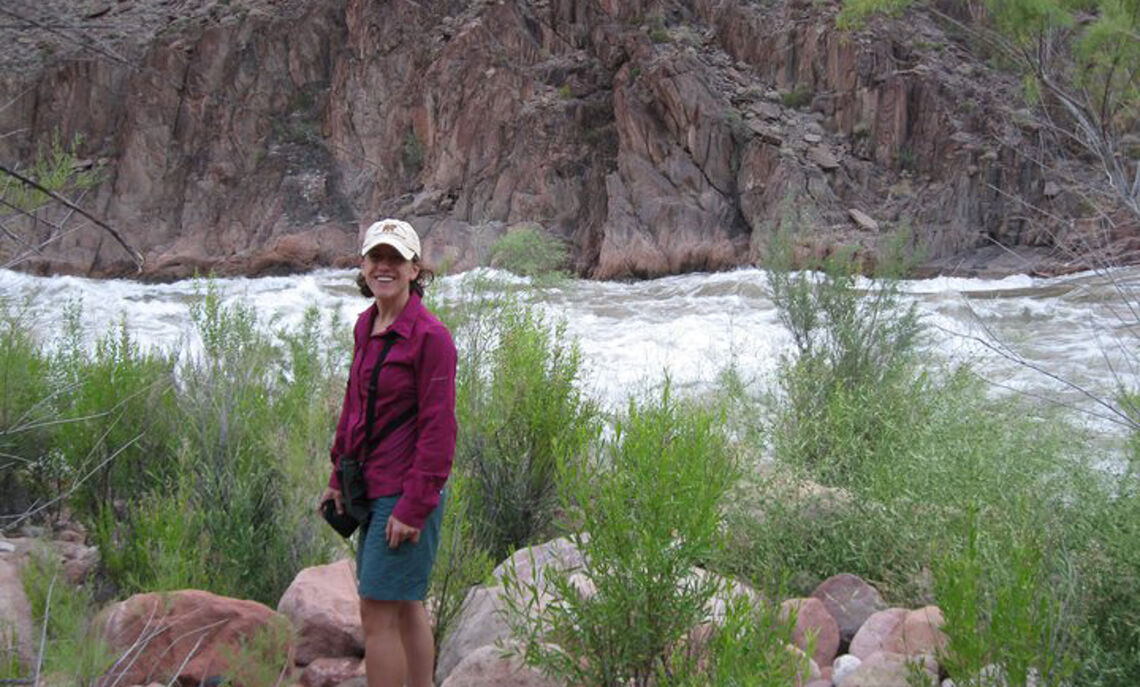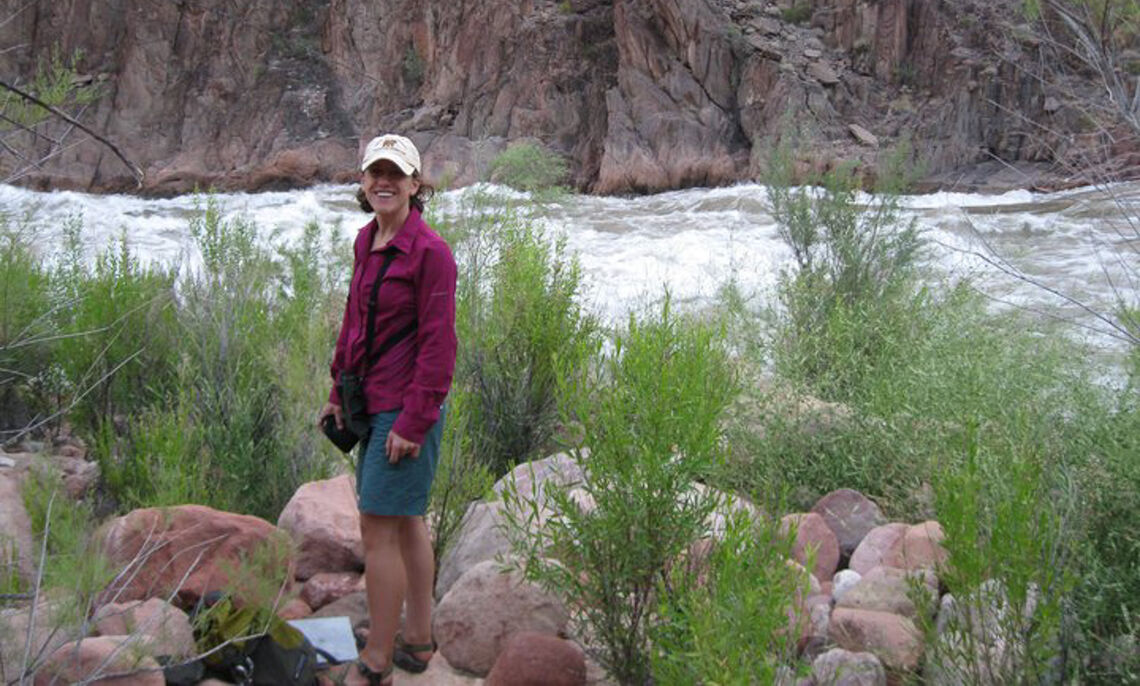F&M Stories
Alum Oversees Wildlife at Zion National Park
Wolves, bear, bison, elk — Franklin & Marshall College alumna Janice Stroud-Settles '00 has studied them all (and more). On the heels of National Park Week, Stroud-Settles gave us a behind-the-scenes glimpse into her life as the wildlife program manager for Zion National Park in southern Utah.
Tell us a bit about your current position.
I serve as Zion National Park's wildlife biologist, supervise a crew of six employees and manage the research, conservation and management of all the wildlife species in the park. One of the biggest parts of my job is to help monitor and recover species listed on the Endangered Species Act and to research and manage at-risk wildlife guilds, such as bats and pollinators. I'm also responsible for ensuring any in-park activity — such as visitor recreation or repairs to park infrastructure— minimally affects wildlife or their habitat.
How did you get from F&M to working for the National Park Service?
I started working for the National Park Service as a lifeguard in the Delaware Water Gap National Recreation Area during my summers in college. A few weeks after graduating from F&M, I was offered a seasonal biological technician job in Grand Canyon National Park. From there, I worked in Yellowstone National Park as a wildlife technician, then I accepted a graduate project at Southern Illinois University. After grad school, I worked for the Arizona Game and Fish Department for a couple of years, then landed back in Grand Canyon for five years, then Bandelier National Monument for a year and now Zion for the past six years.
In what ways did F&M prepare you for your current role?
Although I majored in biology, I believe my minor in environmental studies more directly prepared me for my current role. Although I am responsible for the conservation of wildlife within park boundaries, wildlife can freely move across jurisdictional boundaries — meaning I am continually having to coordinate with different agencies on a wide variety of issues that impact wildlife and their habitat. The environmental studies classes taught me that jobs in the environmental sciences require lots of communication, coordination and compromise.
Do you have a favorite spot among the national parks you've worked at or visited?
That's a hard question! I have so many favorite spots in each park I've worked. I think some of the most spectacular locations I've been are in the remote back country of Grand Canyon while doing Mexican spotted owl surveys. To access the deep, narrow slot canyon where the owls live, I would take a several-week river trip down the Colorado River, stopping at side canyons every day to hike far back to the head of the canyon where the owls live. Most of the time I'd be solo and would spend the night in the canyon, which provided an amazing feeling of peace and solitude among the most spectacular, wild scenery that exists in Grand Canyon.
Related Articles
December 8, 2025
A Diplomat’s Deep Dive into Marine Biology
Learning by doing is part of our DNA as Diplomats. Jaeyun An ’26 dove headfirst into this philosophy, spending a semester in the turquoise waters of Turks and Caicos researching the island’s diverse marine life. “This experience gave me the confirmation that this was what I wanted to do for the rest of my life,” he said.
December 5, 2025
“We Made Something out of Nothing”: Remembering More Than 50 Years of F&M Women’s Squash
F&M women's squash pioneer Elizabeth Mackey ’75 looks back on the program more than 50 years later.
December 2, 2025
Publishing Alumni Share Postgraduate Paths
Learn how F&M shaped the professional lives of four alumni working in publishing. “Franklin & Marshall was the only school where I felt like creative writing was important,” said Rebecca (Bolstein) Chen ’14, editor at TOKYOPOP.





